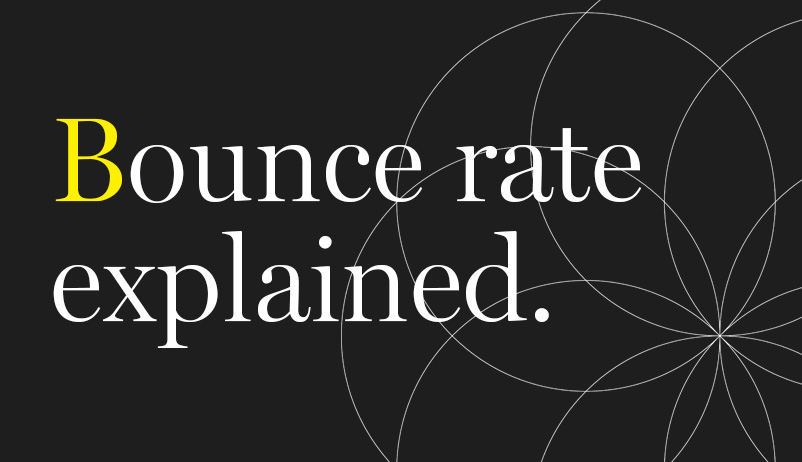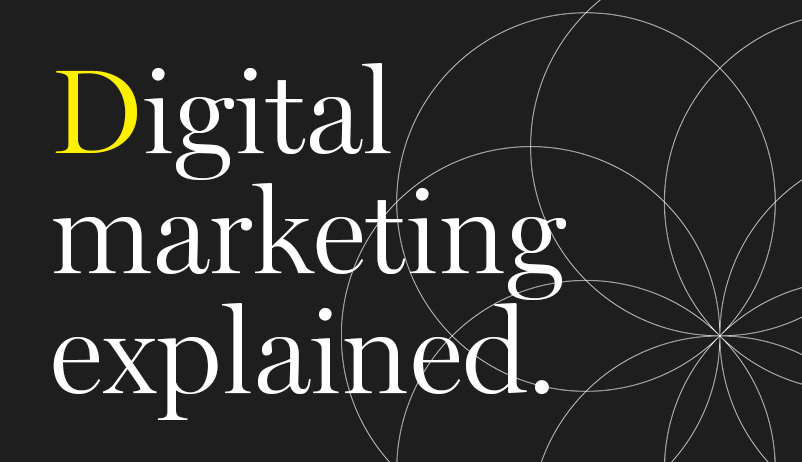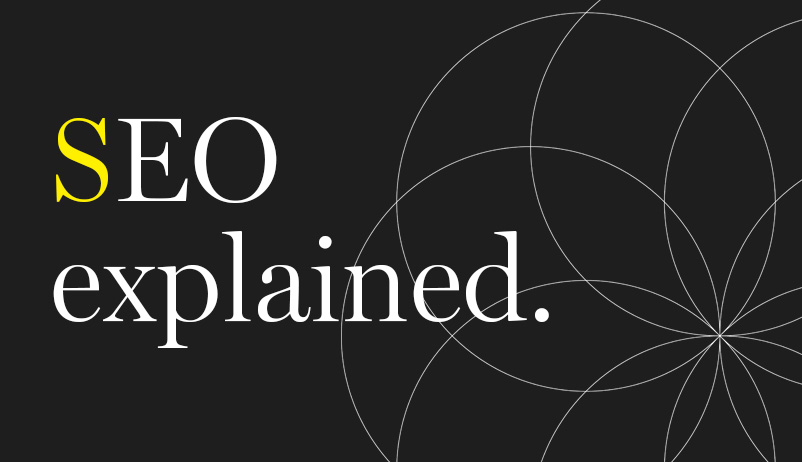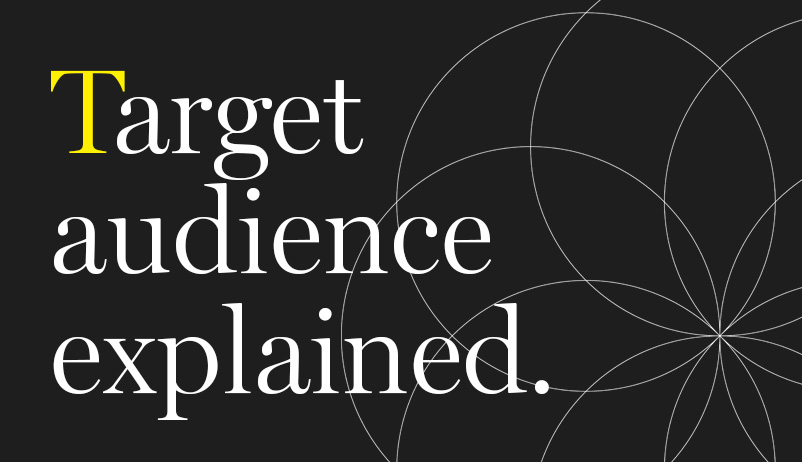

Bounce Rate
Bounce Rate
What Is Bounce Rate?
Lorem ipsum dolor sit amet, consectetur adipiscing elit. Suspendisse varius enim in eros elementum tristique. Duis cursus, mi quis viverra ornare, eros dolor interdum nulla, ut commodo diam libero vitae erat. Aenean faucibus nibh et justo cursus id rutrum lorem imperdiet. Nunc ut sem vitae risus tristique posuere.
What Does Bounce Rate Mean in Marketing?
In marketing, Bounce rate is a metric used in digital marketing that measures the percentage of visitors who land on a website or landing page and then leave without engaging in any further actions, such as clicking on other pages or taking any desired actions, like making a purchase or filling out a form.
A high bounce rate may indicate that visitors are not finding the content or experience they expected, while a low bounce rate suggests that visitors are engaging further with the website.
How Bounce Rate Is Calculated.
Bounce rate is typically calculated as the percentage of single-page sessions divided by the total number of sessions on a website or landing page, expressed as a percentage. A single-page session is a session in which a visitor enters a website or landing page and does not engage in any further actions, such as clicking on other pages or taking any desired actions, before leaving the site.
The formula to calculate bounce rate is:
Bounce Rate = (Number of Single-Page Sessions) / (Total Number of Sessions) x 100
For example, if a website had 1,000 sessions in a given period, and out of those, 300 were single-page sessions where the visitors left the site without engaging further, the bounce rate would be calculated as:
Bounce Rate = (300 / 1000) x 100 = 30%
This means that 30% of the sessions on the website resulted in single-page sessions or bounces. The lower the bounce rate, the better, as it indicates that visitors are engaging further with the website and not leaving immediately after landing on a page.
How Bounce Rate Is Used In Marketing.
Here are a few reasons why the bounce rate is an important key performance indicator in digital marketing:
- Website Engagement: Bounce rate measures website engagement and provides an understanding of how effectively a website or landing page is capturing and retaining visitors' attention. A high bounce rate may indicate that visitors are not finding the content they expected, or they're suffering a poor user experience. Bounce rate information can be used to optimise website design, content, and user experience to improve engagement and reduce bounce rate.
- Content Optimisation: Bounce rate can help marketers identify areas of improvement in their content strategy. If a specific page or piece of content has a high bounce rate, it may indicate that the content is not relevant or engaging to the target audience. Marketers can use this information to optimise the content, make it more relevant, and align it better with the audience's expectations to reduce bounce rate.
- User Experience Optimisation: Bounce rate can provide insights into the user experience (UX) of a website or landing page. A high bounce rate may indicate that visitors are having a poor user experience, such as slow loading times, confusing navigation, or unresponsive design. Marketers can analyse bounce rate in combination with other UX metrics to identify and fix issues, optimise the website or landing page, and improve user experience to reduce bounce rate.
- Campaign Performance Evaluation: Bounce rate can be used to evaluate the performance of marketing campaigns that drive traffic to a specific landing page or website. If a campaign has a high bounce rate, it may indicate that the campaign is not effectively targeting the right audience or driving relevant traffic to the website. Marketers can use this information to optimise their campaign targeting, messaging, and creative assets to improve campaign performance and reduce bounce rate.
What Does a High Bounce Rate Mean?
A high bounce rate typically indicates that a significant percentage of visitors are leaving a website or landing page without engaging further. While a certain level of bounce rate is normal, a consistently high bounce rate may be a cause for concern and may indicate potential issues with website engagement, content quality, user experience, or campaign effectiveness. Here are some possible interpretations of a high bounce rate:
- Low Engagement: A high bounce rate may indicate that visitors are not finding the website or landing page content engaging or relevant, and therefore, leaving without taking any further actions. This could be due to unappealing design, poor navigation, lack of compelling content, slow loading times, or other usability issues.
- Mismatched Expectations: If the website or landing page does not meet the expectations set by the marketing campaign or the search results that led visitors to the site, they may leave immediately, resulting in a high bounce rate. This could be caused by misleading or irrelevant advertising, inconsistent messaging, or poor targeting.
- Technical Issues: Technical issues such as broken links, error pages, or malfunctioning forms can frustrate visitors and prompt them to leave the site, resulting in a high bounce rate.
- Campaign Inefficiencies: A high bounce rate on a specific landing page may indicate that a marketing campaign is not effectively driving qualified traffic or that the landing page is not optimised to convert visitors into customers. This may require further analysis of the campaign targeting, messaging, and landing page design to identify and address the issues.
It's important to note that the interpretation of a high bounce rate should be contextualised within the specific website or landing page being analysed and the industry benchmarks. A high bounce rate may be acceptable or even expected in some cases, such as blogs, news websites, or single-page landing pages with a specific purpose (e.g., contact form submission). However, in general, a consistently high bounce rate may indicate areas of improvement in website design, content, user experience, or marketing campaigns.

"Understanding bounce rate is essential for digital marketers as it measures the percentage of visitors who leave a website without engaging further. By analysing and improving website design, content, user experience, and marketing campaigns, businesses can reduce bounce rate and maximise engagement, ultimately driving better results in their digital marketing efforts."
Paul Mills
Founder, VCMO
What Factors Contribute to a High Bounce Rate?
Several factors can contribute to a high bounce rate, here are some of the common issues:
- Unappealing Design: If a website or landing page has poor visual design, confusing layout, or lacks aesthetic appeal, visitors may leave immediately without exploring further.
- Irrelevant or Low-Quality Content: If the content on a website or landing page does not meet visitors' expectations, lacks relevance, or is of low quality, they may leave without engaging further.
- Slow Loading Times: Websites or landing pages that take too long to load may result in visitors abandoning the site before it fully loads, contributing to a high bounce rate.
- Poor User Experience (UX): Websites or landing pages with complicated navigation, difficult-to-use forms, or other usability issues can frustrate visitors and prompt them to leave quickly.
- Misleading or Inconsistent Messaging: If the messaging on a website or landing page does not align with the marketing campaign or search results that led visitors to the site, they may leave due to a sense of mismatched expectations.
- Irrelevant or Low-Quality Traffic: If a website or landing page attracts visitors who are not the target audience or do not have genuine interest in the content or offerings, they may leave without engaging further, resulting in a high bounce rate.
- Technical Issues: Broken links, error pages, or other technical issues can negatively impact the user experience and prompt visitors to leave the site.
- Poor Campaign Targeting: If a marketing campaign is not effectively targeting the right audience or driving relevant traffic to a website or landing page, it may result in a high bounce rate.
- Mobile-Unfriendly Design: With the increasing use of mobile devices for browsing, if a website or landing page is not optimised for mobile viewing, visitors may leave quickly, contributing to a high bounce rate.
It's important to analyse and address these factors to optimise website or landing page performance, improve user experience, and reduce bounce rate. Regular monitoring, testing, and optimisation of website design, content, user experience, and marketing campaigns can help minimise the impact of these factors on bounce rate and drive better results from digital marketing efforts.
10 Ways to Improve Bounce Rate.
Lowering bounce rate is a key goal for improving website or landing page performance and maximising engagement. Here are some strategies that can help improve bounce rate:
- Improve Website Design: Ensuring that the website or landing page has an appealing design, clear layout, and intuitive navigation can help visitors find what they are looking for and encourage them to stay longer.
- Create Relevant and High-Quality Content: Ensuring that the content on the website or landing page is relevant, valuable, and well-written can engage visitors and encourage them to explore further.
- Optimise Loading Times: Optimising website or landing page loading times by compressing images, minimising server requests, and leveraging caching techniques can help improve user experience and reduce bounce rate.
- Enhance User Experience (UX): Improving the overall user experience by making forms easy to fill out, optimising mobile responsiveness, and ensuring that the website or landing page is easy to use can encourage visitors to stay longer and explore further.
- Align Messaging: Ensuring that the messaging on the website or landing page aligns with the marketing campaign or search results that led visitors to the site can reduce the likelihood of mismatched expectations and lower bounce rate.
- Optimise Campaign Targeting: Ensuring that marketing campaigns are effectively targeting the right audience and driving relevant traffic to the website or landing page can help reduce bounce rate.
- Fix Technical Issues: Regularly monitoring and fixing any broken links, error pages, or other technical issues on the website or landing page can help improve user experience and lower bounce rate.
- Enhance Mobile Optimisation: Optimising the website or landing page for mobile viewing, including responsive design and mobile-friendly navigation, can help improve user experience for mobile users and reduce bounce rate.
- Provide Clear Call-To-Actions (CTAs): Placing clear and compelling CTAs on the website or landing page can encourage visitors to take action and engage further, reducing bounce rate.
- Test and Optimise: Continuously testing and optimising website design, content, user experience, and marketing campaigns based on data and insights can help identify areas for improvement and lower bounce rate over time.
By implementing these strategies, marketers can work towards lowering bounce rate and improving website or landing page performance, resulting in better engagement, higher conversion rates, and ultimately, more successful digital marketing efforts.
Advantages of Measuring Bounce Rate.
- Quick and Easy Metrics: Bounce rate is a simple and easy-to-understand metric that provides a snapshot of website engagement and user experience. It can be easily calculated and monitored using web analytics tools (such as Google Analytics), making it a convenient metric for marketers to track and evaluate.
- Identifies Areas of Improvement: Bounce rate can help marketers identify specific areas of improvement in their website or landing page, such as content relevance, user experience, and campaign performance. This information can be used to make data-driven decisions and optimise marketing strategies to improve website engagement and reduce bounce rate.
Disadvantages of Measuring Bounce Rate.
- Limited Context: Bounce rate alone may not provide the complete picture of website performance or user experience. It does not differentiate between visitors who may have found the information they were looking for quickly and left versus those who left because they did not find the content relevant or engaging. Bounce rate should be analysed in combination with other metrics to gain a more comprehensive understanding of website performance.
- Varied Interpretation: Bounce rate can be interpreted differently depending on the type of website or landing page. For example, a high bounce rate may be expected for certain types of websites, such as blogs or news sites, where users may come for a specific article and then leave.
In contrast, a high bounce rate for an e-commerce site or a landing page may indicate a problem with user experience or content relevance. It is important to interpret bounce rate in the context of the specific website or landing page being analysed.
Recap of Bounce Rate.
Bounce rate is a metric used in digital marketing to measure website engagement, content relevance, user experience, and campaign performance and campaign effectiveness. It provides valuable insights into how visitors are interacting with a website or landing page and can help marketers identify areas of improvement.
However, it should be used in combination with other metrics and interpreted in the context of the specific website or landing page being analysed to gain a comprehensive understanding of overall website performance.
About VCMO
VCMO is a UK-based provider of fractional marketing services, supporting B2B SMEs—ranging from funded scale-ups to mid-tier and private equity-backed businesses—through key moments of growth and transformation. Its Chartered Fractional CMOs and SOSTAC® certified planners embed strategic marketing leadership into organisations navigating product launches, new market entry, acquisitions, and leadership gaps.
Ready to take your marketing to the next level? Let us help you get there.
Subscribe to Our Newsletter
Fractional Edge is our montly newsletter sharing expert opinion on the latest trends in fractional leadership, curated marketing content from leading sources, VCMO events, and much more. Subscribing is quick — just add your name and email.








